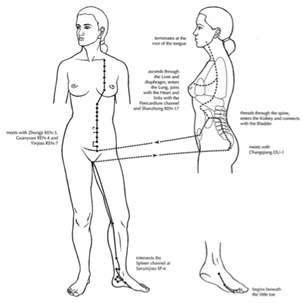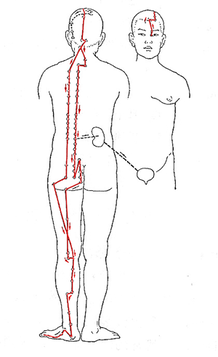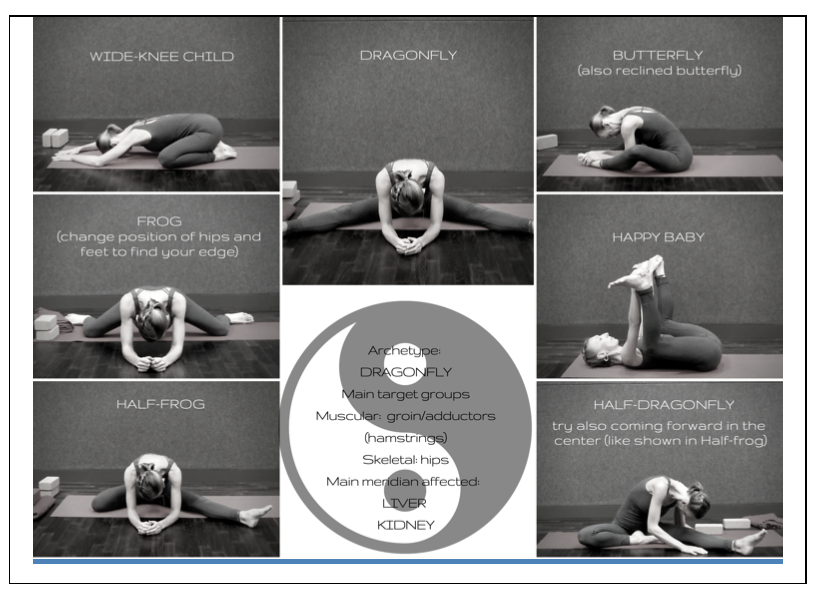5 ELEMENT SERIES
WATER - WINTER - KIDNEYS AND URINARY BLADDER
Winter is the energy of the element Water, the time of rest and hibernation, when nature retreats to build up its reserves for its next cycle of seasons. This is a quieter, more reflective time of year, a time to slow down, to allow the stillness to guide you to the places in your body and psyche you may have neglected. During the darkest time of the year, allow the quiet practices to offer you the rest you need to build an inner reservoir and let these practices guide you into deepening your self-knowledge. This is the time for introspection, as all the answers we seek are within us - we just have to be quiet enough to listen and be empty enough to be filled.
We can enter a phase of internal winter at any season. The first sentence in Katherine May's brilliant book Wintering is "Some winters arrive in the sun." Inner winter is a time of deepening our knowing of what is most essential, time of facing our fears and shadows, time of decent and unraveling, time of stillness, of not knowing, of surrender and of mystery.
According to the Daoist tradition, everything in life requires the association of Yin and Yang for balance, which is why the organ meridians form pairs. To put it simply, Yin organs produce, transform, regulate and store vital substances such as Qi, blood, Jing and body fluids. Yang organs deal with impure substances, and their job has to do with elimination and digestion.
In the holistic view of Daoism and Chinese Medicine each organ pair’s Qi has specific functions in our body and is linked to a particular element and an emotion. The pair of Kidney (yin organ) and Urinary bladder (yang organ) correspond to Water element, the season of Winter and the emotion of Fear.
Like water being the foundation of life in nature, so are the Kidneys believed to house our source energy, vitality and longevity. Kidneys are particularly active during winter, which also means that they can be more vulnerable to imbalance and susceptible to cold exposure. Urinary bladder is the Yang organ that supports the Kidneys and serve as a fluid reservoir. In Chinese Medicine view bladder also monitors how we use our resources (time, money, energy) making sure we have enough reserves.
Kidneys are considered like your batteries :-) They store a type of Qi called "Jing" - which can be translated as "vital essence". There is pre-natal Jing which we are born with and inherit from our parents (like our generic constitution). We are born with a certain amount and the regular processes of living, growing, developing, maturing and aging use up Jing. That's just the natural process of aging - part of being alive. But the way we live can "burn up" Jing more slowly or more quickly.
As you might guess, things like unhealthy eating, alcohol, drug use, but also stress and not getting enough sleep are behaviors that use up our vital essence more quickly. I've been thinking about this a lot - in connection to burnout, chronic stress and overworking as these dip into the Jing storage for sure!
Whereas activities like - slowing down and prioritizing rest, meditation, eating healthy, activities that uplift and "light you up", and yin yoga (I'm sure) help to conserve Jing.
In Chinese Medicine view, each organ also houses a spirit. Zhi is the spirit housed in Kidneys. It is translated as willpower. On a superficial level (Yang will), Zhi is responsible for self-determination, will power, ability to achieve our goals. But on a deeper level (Yin will) it stands for our capacity to surrender our individual will to align one's life with Tao. "Will that cannot be willed" - "Yin will is mostly a direction, a willfulness that moves to an end that cannot be know until it is already reached... It is the wisdom that cannot be obtained, but is accumulated ... it possesses a deep trust in that the unknown eventually reveals an inevitable destiny (Ted Kaptchuk).
I want to share a passage from a book Five Spirits by Lorie Eve Dechar. She talks about Taoist alchemists' discoveries around preserving Jing:
"They discovered that they could actually use entropy, the energies of gravity, matter and the yin - the energies of stillness, receptivity and surrender - as a way to gain rather than deplete energy value. The secret of this alchemical reversal was to surrender the natural strivings of the will and to align one's life and one's actions with Tao. ...they could gain potency by going with the tide of natural flow rather than trying to impose their individual will on the world around them.
Taoist sages saw that, paradoxically, the more they followed the way of the receptive yin, the more they surrendered the potent yang striving of their will to the infinitely more potent will of Tao, the more vitality, spontaneity, compassion and joy they attained. As they surrendered their limited personal will to the greater will of the divine, their capacity to do, to be, to illuminate and to manifest increased rather than decreased as they aged. In the life of the sage, energy value increased as will transformed to an even more potent substance called wisdom."
According to the Daoist tradition, everything in life requires the association of Yin and Yang for balance, which is why the organ meridians form pairs. To put it simply, Yin organs produce, transform, regulate and store vital substances such as Qi, blood, Jing and body fluids. Yang organs deal with impure substances, and their job has to do with elimination and digestion.
In the holistic view of Daoism and Chinese Medicine each organ pair’s Qi has specific functions in our body and is linked to a particular element and an emotion. The pair of Kidney (yin organ) and Urinary bladder (yang organ) correspond to Water element, the season of Winter and the emotion of Fear.
Like water being the foundation of life in nature, so are the Kidneys believed to house our source energy, vitality and longevity. Kidneys are particularly active during winter, which also means that they can be more vulnerable to imbalance and susceptible to cold exposure. Urinary bladder is the Yang organ that supports the Kidneys and serve as a fluid reservoir. In Chinese Medicine view bladder also monitors how we use our resources (time, money, energy) making sure we have enough reserves.
Kidneys are considered like your batteries :-) They store a type of Qi called "Jing" - which can be translated as "vital essence". There is pre-natal Jing which we are born with and inherit from our parents (like our generic constitution). We are born with a certain amount and the regular processes of living, growing, developing, maturing and aging use up Jing. That's just the natural process of aging - part of being alive. But the way we live can "burn up" Jing more slowly or more quickly.
As you might guess, things like unhealthy eating, alcohol, drug use, but also stress and not getting enough sleep are behaviors that use up our vital essence more quickly. I've been thinking about this a lot - in connection to burnout, chronic stress and overworking as these dip into the Jing storage for sure!
Whereas activities like - slowing down and prioritizing rest, meditation, eating healthy, activities that uplift and "light you up", and yin yoga (I'm sure) help to conserve Jing.
In Chinese Medicine view, each organ also houses a spirit. Zhi is the spirit housed in Kidneys. It is translated as willpower. On a superficial level (Yang will), Zhi is responsible for self-determination, will power, ability to achieve our goals. But on a deeper level (Yin will) it stands for our capacity to surrender our individual will to align one's life with Tao. "Will that cannot be willed" - "Yin will is mostly a direction, a willfulness that moves to an end that cannot be know until it is already reached... It is the wisdom that cannot be obtained, but is accumulated ... it possesses a deep trust in that the unknown eventually reveals an inevitable destiny (Ted Kaptchuk).
I want to share a passage from a book Five Spirits by Lorie Eve Dechar. She talks about Taoist alchemists' discoveries around preserving Jing:
"They discovered that they could actually use entropy, the energies of gravity, matter and the yin - the energies of stillness, receptivity and surrender - as a way to gain rather than deplete energy value. The secret of this alchemical reversal was to surrender the natural strivings of the will and to align one's life and one's actions with Tao. ...they could gain potency by going with the tide of natural flow rather than trying to impose their individual will on the world around them.
Taoist sages saw that, paradoxically, the more they followed the way of the receptive yin, the more they surrendered the potent yang striving of their will to the infinitely more potent will of Tao, the more vitality, spontaneity, compassion and joy they attained. As they surrendered their limited personal will to the greater will of the divine, their capacity to do, to be, to illuminate and to manifest increased rather than decreased as they aged. In the life of the sage, energy value increased as will transformed to an even more potent substance called wisdom."
EMBODIMENT OF WATER ELEMENT through
the sinew and primary channels of Chinese medicine
Just like Qi can be thought of as the organizational force of the body, meridians can be seen as the network of channels or a “conduit” (term by P. Unschuld) through which that organizing force moves, like channels of communication along which subtle information flows. According to this view, as long as Qi flows freely through the channels and the internal organs work in harmony, the body remains healthy.
Largely like the concept of Qi, the meridian theory was dismissed by western science until quite recently, when the connective tissue (fascia) research began to reveal similarities and overlap between myofascial pathways and Chinese meridian maps. There are a lot of things Western science still cannot “prove” or understand about the inner workings of Chinese Medicine, but the wide-held belief is that the anatomical basis of acupoints and meridians is the fascial network distributed throughout the body.
The meridian system consists of larger and smaller channels, currents that are closer to the surface of the body, and pathways that run deep and internal connecting the exterior to the interior each serving somewhat different functions. My current view is that in Yin yoga poses we mainly affect the sinew channels. Yet, of course, everything in the body is connected, so the Sinew Channels have connections with other channels and to the Jing Luo network (this is the Chinese name for what often gets translated as meridians, Jing means to go through, a thread in the fabric and Luo something that connects or attaches, a net.)
When connecting to an element and discovering how to move with that element, it can be beneficial to map and trace the channel pathways, and then try to sense them during the practice. It also can help to uncover which poses or movements to bring into your practice.
Largely like the concept of Qi, the meridian theory was dismissed by western science until quite recently, when the connective tissue (fascia) research began to reveal similarities and overlap between myofascial pathways and Chinese meridian maps. There are a lot of things Western science still cannot “prove” or understand about the inner workings of Chinese Medicine, but the wide-held belief is that the anatomical basis of acupoints and meridians is the fascial network distributed throughout the body.
The meridian system consists of larger and smaller channels, currents that are closer to the surface of the body, and pathways that run deep and internal connecting the exterior to the interior each serving somewhat different functions. My current view is that in Yin yoga poses we mainly affect the sinew channels. Yet, of course, everything in the body is connected, so the Sinew Channels have connections with other channels and to the Jing Luo network (this is the Chinese name for what often gets translated as meridians, Jing means to go through, a thread in the fabric and Luo something that connects or attaches, a net.)
When connecting to an element and discovering how to move with that element, it can be beneficial to map and trace the channel pathways, and then try to sense them during the practice. It also can help to uncover which poses or movements to bring into your practice.
KIDNEY AND URINARY BLADDER CHANNELS
FASCIA ANATOMY
where ancient wisdom meets modern understanding of the body
| By one of the definitions fascia is an uninterrupted viscoelastic tissue, which forms a functional 3-dimensional collagen matrix that surrounds and connects every muscle and organ, forming continuity throughout the body. Fascia surrounds and penetrates all structures of the body, extending from head to toe. This description is very similar to how energy channels are described in Chinese Medicine. Connective tissue consists of collagen and water which are both good at conducting electrical signals, and studies have shown that acupuncture points and channels conduct electricity better than the surrounding tissues. (Daniel Keown, ‘The Spark in the Machine’). Movement and stress can create tiny electrical currents and magnetic fields in the body (through a process called piezoelectricity), therefore the mechanical forces transmitted through the meridian system ultimately reach into the matrix of the cell, where they produce biochemical and transcriptional changes (Jimi Wollumbin). (excerpt from our Yin and Fascia Teacher Training manual) | Compare the pathway of the Superficial backline from modern fascia anatomy with the Urinary bladder sinew channel of Chinese Medicine: |
SOME YIN POSES THAT TARGET KIDNEY
AND URINARY BLADDER CHANNELS
AND URINARY BLADDER CHANNELS









 RSS Feed
RSS Feed